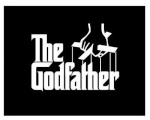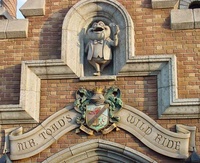

|
| 
| | Disney réorganise ses parcs d'attractions |    |
| | Auteur | Message |
|---|
féetati


Messages : 829
Localisation : Belgique [ Sombreffe]
Inscription : 26/07/2008
 |  Sujet: Disney réorganise ses parcs d'attractions Sujet: Disney réorganise ses parcs d'attractions  Ven 20 Fév - 0:11 Ven 20 Fév - 0:11 | |
| Je ne savais pas où poster ceci donc soyez indulgent, merci. J'ai trouvé cet article sur le site d'un journal canadien. - Citation :
-
Malgré de bons résultats, Jay Rasulo, le patron de l'activité parcs d'attractions de Walt Disney lance une vaste restructuration qui entraînerait des suppressions d'emplois. En effet, au début du mois, le groupe avait annoncé que les bénéfices de ses parcs d'attraction avaient reflué de 24% en glissement annuel durant la période octobre-décembre. Mais ses parcs souffrent d'une baisse de fréquentation marquée aux Etats-Unis.
Pour Walt Disney, il s'agit de "simplifier la structure opérationnelle, améliorer le processus de prise de décision, et éliminer les redondances", a expliqué le groupe, inscrivant cette réorganisation dans un projet pour uniformiser l'expérience des visiteurs des parcs Disney. "Ces changements sont indispensables pour garder notre position de leaders dans le tourisme familial, et reflètent les réalités économiques d'aujourd'hui", a expliqué Jay Rasulo, président de Walt Disney Parks and Resorts.
Certaines opérations de gestion du parc Disneyland en Californie (ouest) et de Walt Disney World en Floride (sud-est) doivent notamment être fusionnées. "Les changements d'organisation exigent des décisions difficiles, y compris l'élimination de certaines fonctions", a déclaré Jay Rasulo faisant ainsi allusion aux suppressions de poste sans pour autant chiffrer le nombre de postes concernés.
Cette annonce intervient moins d'un mois après l'ouverture d'un guichet départ pour 600 cadres des parcs d'attraction Disney. Les volontaires avaient jusqu'au 6 février pour se faire connaître, et leur départ devait s'échelonner jusqu'à la fin mars. Le groupe avait prévenu qu'il envisageait des licenciements secs si cette proposition rencontrait un succès insuffisant.
|
|   | | SphinX


Âge : 50
Messages : 4118
Localisation : A Efteling
Inscription : 04/07/2007
 |  Sujet: Re: Disney réorganise ses parcs d'attractions Sujet: Re: Disney réorganise ses parcs d'attractions  Ven 20 Fév - 0:41 Ven 20 Fév - 0:41 | |
| Ca a aussi été posté sur Newsparcs: http://www.newsparcs.com/index2.php?choix=20&lim=25&larg=1024&haut=768&suite=4507#4507  https://rue-efteling.blogspot.com/, voix francophone non off sur le plus grand parc néerlandais. Taulier sur Europarcs.net, la base de données francophone sur les parcs européens. |
|   | | féetati


Messages : 829
Localisation : Belgique [ Sombreffe]
Inscription : 26/07/2008
 | |   | | dlrp15

Âge : 33
Messages : 1317
Inscription : 01/12/2007
 | |   | | SphinX


Âge : 50
Messages : 4118
Localisation : A Efteling
Inscription : 04/07/2007
 |  Sujet: Re: Disney réorganise ses parcs d'attractions Sujet: Re: Disney réorganise ses parcs d'attractions  Ven 20 Fév - 2:38 Ven 20 Fév - 2:38 | |
| Aucune mention de ces sites-là dans l'article, mais Rasulo étant le patron de TOUTE la division Parks & Resorts, on peut se poser la question.  https://rue-efteling.blogspot.com/, voix francophone non off sur le plus grand parc néerlandais. Taulier sur Europarcs.net, la base de données francophone sur les parcs européens. |
|   | | disneytot51


Âge : 33
Messages : 383
Localisation : Reims
Inscription : 22/06/2008
 |  Sujet: Re: Disney réorganise ses parcs d'attractions Sujet: Re: Disney réorganise ses parcs d'attractions  Ven 20 Fév - 2:48 Ven 20 Fév - 2:48 | |
| Je crois pas que nous serons touchés, car ils vont rassembler,fusionner certains services du résort de floride et de californie; donc nous, ils ne peuvent pas car il n'y a qu'un resort en europe.
Peut être plus tard feront il la même chose avec tokyo et hong kong même si ça risque d'être plus difficile. |
|   | | joe59
Messages : 32
Inscription : 23/08/2007
 | |   | | HTH2004


Âge : 46
Messages : 844
Localisation : Orlando, FL
Inscription : 03/10/2007
 |  Sujet: Re: Disney réorganise ses parcs d'attractions Sujet: Re: Disney réorganise ses parcs d'attractions  Ven 20 Fév - 3:16 Ven 20 Fév - 3:16 | |
| La vraie raison reste tjs le fait que Euro Disney SCA n'est pas controlé totalment par TWDC (ou dans le cas de HKDL eux ils ont bcp + de pouvoir et il y a encore pas mal d'executives Americains dans leur management...) |
|   | | gregzzz

Âge : 46
Messages : 3086
Localisation : Belgique
Inscription : 12/07/2007
 | |   | | MykeY

Messages : 846
Localisation : Paris
Inscription : 13/08/2007
 |  Sujet: Re: Disney réorganise ses parcs d'attractions Sujet: Re: Disney réorganise ses parcs d'attractions  Ven 20 Fév - 7:47 Ven 20 Fév - 7:47 | |
| Pas de restructuration à Disneyland Paris *
Alors que les parcs Disney des Etats-Unis vont devoir supprimer des emplois à cause de la crise (annonce du 19/02), Euro Disney SCA, maison mère du parc Disneyland Resort Paris, se déclare non concerné par ces restructurations. Il rappelle que le groupe Disney (The Walt Disney Company) n'est qu'actionnaire d'Eurodisney.
Fin janvier le président d'Eurodisney se félicitait de l'activité du parc d'octobre à décembre 2008 (CA en hausse de 6%) : "La hausse de la fréquentation reflète le succès de nos offres commerciales adaptées aux contraintes de pouvoir d'achat des consommateurs. (...) Nous ne sommes pas immunisés contre l'impact d'une crise économique prolongée et nous concentrerons nos efforts (NDLR : en 2009) sur la gestion de nos coûts tout en continuant à proposer une expérience Disney de qualité."
Euro Disney SCA a réalisé au premier trimestre de son exercice (oct à déc 2008) un chiffre d'affaires de 327,8 millions d'euros.
source: IDFeco
Walt Disney World Company n'est pas en super forme, qu'en est-il de Disney Resort Paris (ex Disneyland Paris), dont l'américain est le principal actionnaire? Bien. Enfin, mieux. Pour la première fois en 2008, le groupe est bénéficiaire, ou tout au moins à l'équilibre, une fois qu'il a payé les intérêts financiers à ses minoritaires.
Une bonne nouvelle pour le parc d'attractions, qui depuis son ouverture en 1992, vit une histoire chaotique. Il n'a été rentable qu'entre 1995 et 2001. Ensuite, à nouveau trois années de vache maigre. "En 2002, nous avons décidé d'ouvrir le deuxième parc d'attractions, alors que nous prenions de plein fouet la crise économique due aux attentats du 11 septembre 2001. C'était un mauvais timing", avoue-t-on chez Disney Resort Paris.
Dur de remonter la pente, avec des comptes plombés par une dette de 1,9 milliard d'euros, traînée depuis l'ouverture du parc en 1992. "Cela fait seulement deux ans que nous commençons à la rembourser, et d'ici à 2012 nous en aurons payé un quart", reconnaît le groupe.
Une dette colossale, un projet pharaonique et une mauvaise stratégie. Tous les ingrédients étaient réunis pour plomber un peu plus ce parc, tant décrié dès sa conception. Pourtant l'équation de Disney Resort Paris est simple: augmenter la fréquentation de nouvelles attractions et surtout accroître les dépenses par visiteurs, via l'hôtellerie, la restauration, et les achats en boutique. Il faut dire que les charges d'exploitation des 14. 430 m2 sont lourdes: 1,240 milliard d'euros par an pour financer la maintenance, le personnel (13.000 salariés, dont 90% sont en CDI), le marketing et les ventes.
Mais avec un endettement trop lourd, la marge de manœuvre pour investir était limitée. Et le management de l'époque ne veut pas se risquer à plomber un peu plus les comptes. La valse des dirigeants continuent et en 2005, un nouveau patron arrive, le sixième: Karl Holtz.
Une page se tourne. Karl Holtz reprend la barre et décide de réinvestir. Une augmentation de capital est lancée en 2005, 240 millions d'euros sont levés, souscrit pour moitié par Walt Disney Company. Plusieurs nouvelles attractions sont programmées entre 2006 et 2008, dont la Tour de la Terreur. Un succès. La fréquentation revient. Le parc peut se féliciter d'attirer 15,3 millions de visiteurs en 2008, devenant la première destination touristique d'Europe. Et la dépense moyenne d'un visiteur atteint 46,30 euros.
Mais l'investissement ne fait pas tout. "Nous avons complètement repensé notre stratégie marketing. Avant nous réfléchissions par pays, maintenant nous avons une vision beaucoup plus fine du marché", explique le parc d'attractions. "Nous segmentons nos clients: les familles avec enfants, les jeunes adultes, et les familles avec de grands enfants. Et nous faisons des offres adaptées à chaque catégorie. Ensuite, nous adaptons les offres par type de pays". Les Anglais et les Espagnols font des séjours plus longs que les Français par exemple. Ensuite, les Anglais réservent longtemps à l'avance, alors que les Espagnols réservent une semaine avant leur départ. Autant de critères qui sont aujourd'hui pris en compte et ça marche: les hôtels, 5.800 chambres au total, ont un taux d'occupation de 91%. Mais pour continuer sur cette lancée, le parc ne lésine pas sur les moyens. Le budget du marketing, ventes, et publicité atteint 125 millions d'euros, soit un peu moins de 10% du chiffre d'affaires.
Disney Resort Paris a trouvé son modèle, enfin il l'espère. Et il compte poursuivre les investissements, financés par son cash flow. La fête magique de Mickey sera "l'expérience" de 2009. Le parc espère que les clients vont adhérer.
Et surtout, Disney Resort Paris n'a plus qu'à croiser les doigts que la nouvelle crise économique ne remette pas un nouveau frein à la stratégie poursuivie par Philippe Gas, le nouveau patron depuis septembre 2008. "Nous n'avons pas une attitude triomphaliste, et si nous avons tiré nos résultats au premier trimestre grâce à la France, nous ne sommes pas immunisés face à la crise", avoue Disney Resort Paris.
Anne-Sophie Galliano
Source: E24
Maintenant il faut voir si le bon 1er trimestre peut continuer et si la fete magique de mickey sera payante ou non... |
|   | | HK


Messages : 51
Inscription : 16/11/2007
 | |   | | Demonium


Messages : 750
Localisation : Dans les entrailles de la terre.
Inscription : 23/06/2008
 |  Sujet: Re: Disney réorganise ses parcs d'attractions Sujet: Re: Disney réorganise ses parcs d'attractions  Sam 7 Mar - 20:18 Sam 7 Mar - 20:18 | |
| - HK a écrit:
- Quand on dit que Disneyland Paris n'aura pas de restructuration, ça me fait bien rire...Vu qu'ils ont déja commencé il y a un an en réorganisant la maintenance....il vont bien profiter de la crise pour faire des économies de personnel. Chez opération ils ne renouvellent pas les CDI. Le staf est au minimum....Ils sont entrain de bloquer toutes les potes. A ce que j'ai entendu dire c'est que le type qui a fait la réorganisation de la maintenance s'attaquerait prochainement dans les autres services. Affaire à suivre...
Pour la maintenance sa n'a rien a voir , le fait est que ces maintenances -effet spéciaux-animation-show contrôleet maintenance scénique On exactement les même competance , c'est a dire réparer un audio animatronique , machine à fumée , scanner , lyre ect sa ces 4 maintenances peuvent le faire , donc il est donc naturelle de fusionner ces maintenance ! Car avant chaque maintenance vait sont propre boulot et certain jour il n’y avait rien à faire … En ce qui concerne les postes a dlrp il peuvent facilement en virer 500 sans affecté le bon fonctionnement du site .Car quand on ma dit que 16 guest flow on été embauché alors que le service était déjà plein a craqué .....bref et la liste des erreurs est longue. |
|   | | HK


Messages : 51
Inscription : 16/11/2007
 | |   | | J. Thaddeus TOAD


Âge : 49
Messages : 5431
Localisation : Orléans
Inscription : 04/07/2007
 |  Sujet: Re: Disney réorganise ses parcs d'attractions Sujet: Re: Disney réorganise ses parcs d'attractions  Ven 3 Avr - 20:13 Ven 3 Avr - 20:13 | |
| It's not just you. There are quite a few folks in Disney fandom scratching their heads and wondering just what, exactly, is going on at Walt Disney World right now. The pieces of evidence for the actual status of the business are contradictory and conflicting. On the one hand, you've got the negatives, piling up one after another: the downturn, the reduced air travel, the statistics on empty hotel rooms in Orlando, the recessionary pinch, the anecdotal evidence of fewer vacations, and most visibly of all, just this last week there was massive layoffs of a type very seldom seen at Disney parks. But on the other hand, you've got signs that things are just peachy-keen: Disney is rolling out D23 (the magazine, club, and collector's group), rehabs continue apace at WDW, and more than once during the past few weeks, the Magic Kingdom has announced in mid-day that they were extending the park hours by an extra hour, sometimes adding extra evening entertainment, all in a pitch to handle the extra crowds. Visitors notice no overt signs of a downturn or reduced crowds; indeed, wait times at attractions are as long as ever. So again, what gives? How is this possible to have boom times in the park but mercilessly slash manager payrolls?  What recession? Lines are still fairly long at Expedition Everest. What recession? Lines are still fairly long at Expedition Everest.The layoffs are not just a matter of reducing workforce back to sustainable levels, nor is it about cutting out layers of unneeded management fat, though you could be forgiven for thinking that. It's more likely to be Disney's reaction to the downturn in general, and the reduced revenues (yes, I know the parks feel busy and there shouldn't be reduced revenues - bear with me for a second). With Disney cutting labor hours and upkeep costs in the months and years of "boom times," there was little fat left to cut, as I pointed out a few weeks ago. So if Disney needed to make further operational cuts, those would be cuts to the meaty parts of the operation. That's been borne out now by the nature of the cuts; there were many veterans let go, with guest services sure to be impacted somehow. It's likely that the layoffs will serve as a kind of strategic insurance against shareholder dismay soon to come. Think of it as inoculation, like a shot you take ahead of time to avoid greater problems down the road. This way, when the next quarterly results come out, Disney can point to the layoffs and claim they've been taking action all along, not to worry, we're in charge, the ship is not sinking. But this kind of rhetoric will presumably mask (or at least sweeten, at a minimum) the bitter pill that earnings in the parks and resorts division is unlikely to be as high as last year, let alone rising year over year. Remember: it all comes down to the stock's share price, which means massaging expectations for earnings is job #1 pretty much all the time. The layoffs must be seen as a part of that grand strategy. Imagine the shareholder dismay (and the tumble in stock price) if the quarterly reports show diminished earnings and the company didn't pull back by reducing workforce! In short, it looks like the correct interpretation is that things are more in the "grim" category for Disney than in the "rosy" side. If you need further proof, look to the cycle of discounts now going on. For several years, Disney has offered a Free Dining promotion if you stay in their hotels in selected weeks (the so-called "off season"). This spring saw the creation of a new program for free hotel nights, and this appears to be continuing into the summer. What better way to lure folks for a vacation than to make some of the days "free"? It's a pretty simple logical inference to make, then, that Disney is up to something with these promotions. Sure, they want to maintain crowd levels in the recession. But they've been doing it for some years, long before the recession, and I've argued here before that the goal was to do away with the "off-season" concept. Put another way, Disney as an operator of theme parks saw times of the year with low attendance, still-too-high labor costs, and short lines, and realized they could make more money by tweaking things. Solution: lure folks to come in the off-season, by virtue of these hotel and ticket incentives (the Magic Your Way tickets, free admission on your birthday, as well as the Disney's Magical Express bus service, are part of this equation too), and the park will fill up with hordes as if by, well, by magic.  Already have admission (perhaps as part of a can't-turn-it-down package deal)? Already have admission (perhaps as part of a can't-turn-it-down package deal)?
Then maybe you want this Ultra-FastPass.
Voila, you've done away with the off-season. I could construct an argument that the need to have no off-season springs from 2001, in the aftermath of the 9/11 attacks. WDW suffered a crippling blow, and tourism was deep in the doldrums. To their credit, they stayed open and lost gobs of money--part of the idea was surely to demonstrate that things "can return to normal" and so they operated as such. But the bottom line surely stung. Disney is a publicly traded company and couldn't afford that; they needed doomsday plans. What they needed most of all was a way to smooth out the business cycles, to make earnings reliable and predictable.
Enter Jay Rasulo. Have you ever wondered how it is that Jay was handed the keys to the kingdom over more seasoned theme park operators in the States? It was his performance while in charge of Disneyland Paris that did the trick. Jay inherited an operational nightmare in DLP, and in fairness he helped save the place by instituting policies to maximize worker time. Put briefly, whenever there were short lines or excess capacity, that was a chance to save money, perform operations differently to maximize the labor hours, and make the customer wait a bit longer (and thus squeeze out more efficiency in the system). At DLP, this was necessary, in part because the debt structure of the park and its overbuilding of hotels had created an untenable solution. Doing operations in the usual Disney style, as was done at first, was no longer a luxury that DLP could enjoy. Jay had to clamp down hard and make lines longer, intentionally, to maximize revenue and profit margins. It worked.
And, alas, it caught the eye of Disney corporate executives. They saw how well the profit margins worked at Paris and thought Jay could work some similar magic on Anaheim and Orlando. Looking only at spreadsheets, you could almost see how the accountanteers could envision the solution. Why not bring over the same efficiencies from Paris to Anaheim and Orlando?  Want to see Buzz Lightyear? That will be 70 minutes, please! Want to see Buzz Lightyear? That will be 70 minutes, please!
(Your time has become a kind of currency)
The answer, you and I may know, is that bringing over the efficiencies is a bad idea because they are so customer-unfriendly. They may have saved DLP, but the debt structure and repayment terms necessitated Jay's operational efficiencies in Paris, whereas no such urgency existed Stateside. But as we all know, Jay was selected, and the rest has become visible in hindsight.
From the beginning, Jay seems to have made moves designed to flatten the business cycle, and to do away with that horribly inefficient off-season. The macro-projects listed above (DME busses, MYW tickets, hotel promotions, free birthday admission, free dining) are only the tip of the iceberg.
Far more pervasive, and to my mind far more insidious, are the Guest Satisfaction surveys. It sounds innocuous enough; why not survey your visitors and find out what they like? But today's advanced computers and even more advanced modeling and algorithms make it possible to parse survey data in such a way as to use the information detrimentally. Harnessing efficiency sounds fine and dandy until you consider that it could (and does, in today's WDW) mean that every program will be cut if it doesn't meet the needs of the "center" part of the distribution curve. In other words, if you experience something new at WDW and like it, you might be in for a shock when it disappears. Take the Kim Possible Adventure. If you like this, you would be dismayed if Disney ever got rid of it, yet that's exactly what they would do if not "enough" people liked it.
And what counts as "enough"? Well, as Dr. Marsh says in the preshow for Dinosaur, "that's proprietary." Suffice to say that they are keeping track on every metric imaginable (and some not so imaginable) and they are constantly shuffling to refine the formulas.
In other words, theme park management has become a science (or so they tell themselves anyway). The park hours are determined by attendance projections, and so are staffing levels for custodial, restaurants, attractions. Sound reasonable to you? Well, remember those computer formulas are designed to maximize efficiency, not guest service. The very idea is to have lines in the park, not to keep lines down.  Prime dinner time at Electric Umbrella, and only one cashier is working. Prime dinner time at Electric Umbrella, and only one cashier is working.
And now, finally, we circle back to the problem statement at the start of the article. How can we see mass layoffs and extended park hours in the same week? Because computers and formulas are calling the shots, in the name of efficiency. The park hours extensions happen when attendance spikes over the expected amount. Think of it this way: the park hours had been scheduled artificially low, based on an algorithm, and when crowd levels broke through expectations, they had to return to "normal" park hours. We're still not back to operating hours like you saw in the '80s and '90s, even with those extensions.
My problem with the quant-model is that some experiences in the theme parks just aren't quantifiable. You can make a statistics-and-survey based argument that reducing walkaround face characters makes sense, in favor of hardened meet-and-greet areas, but does that algorithm really capture the "magic" a child feels when "stumbling" across a face character in the park? You can't reduce entertainment purely to numbers and realistically expect the experience is on par with the previous quality.  I wonder what the algorithm looks like that calculates how much the Finding Nemo musical is "worth"? I wonder what the algorithm looks like that calculates how much the Finding Nemo musical is "worth"?
The same goes for maximizing efficiency to such an extent that guest experience is compromised. Disney still indoctrinates new hires with the "Four Keys to Our Success": Safety, Courtesy, Show, Efficiency… in that order. I could make a good argument that a short line at an attraction is good show and good courtesy. Certainly the reverse, a very long line at an attraction, could mean maximizing efficiency at the expense of courtesy. Take the argument to its extremes: you could run Space Mountain on a crew of three or four, probably, but lines would be three or four hours long. That's efficient, all right, but it's bloody bad show and courtesy. I'm aware that the opposite extreme is equally ludicrous: a crew of 75 people working one ride is inefficient. But surely the golden mean must be somewhere in the middle, not near one end of the spectrum (the end close to "ultra-efficient"). Yet that end of the spectrum is exactly where Jay is taking the company.
The magic may not be quantifiable, but it's easy to find it. Just ask the visitors open-ended questions, not survey questions designed to figure out how to save money. If you ask folks what they like best, you'll hear about details on the Disney rides, or the friendly Cast, or the clean parks, or the blast they had on a day that featured no lines. None of the above would be possible if the "maximizing efficiency" concept were taken to extremes, as is now happening.
Too much efficiency is slowly killing everything that makes Disney "Disney."
http://miceage.micechat.com/kevinyee/ky040209a.htm |
|   | | |
Sujets similaires |  |
|
| | Permission de ce forum: | Vous ne pouvez pas répondre aux sujets dans ce forum
| |
| |
| |
|








